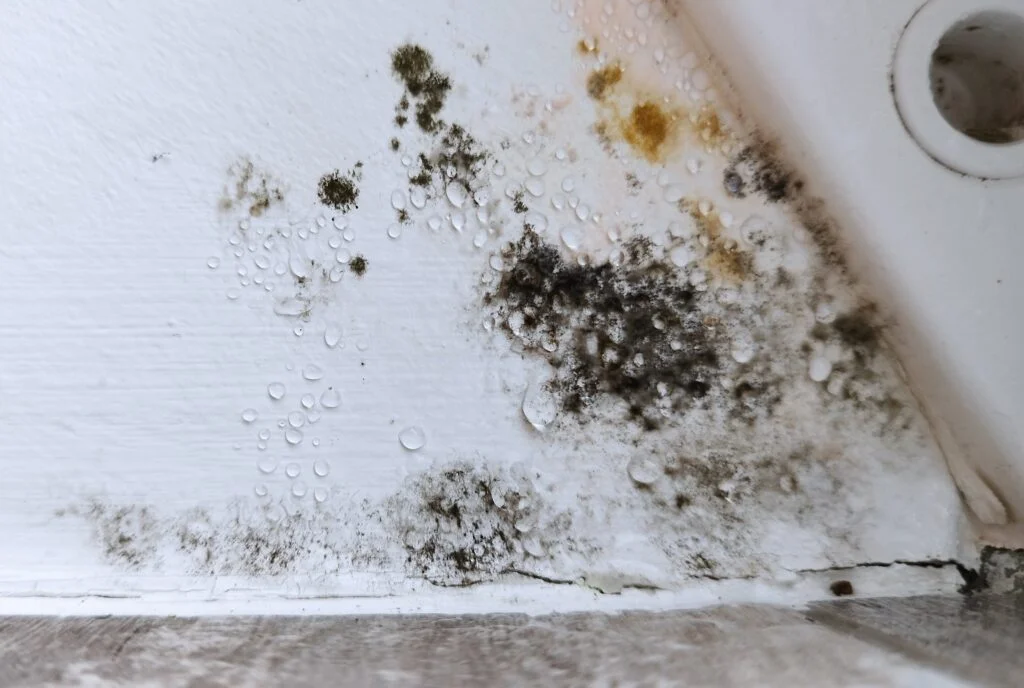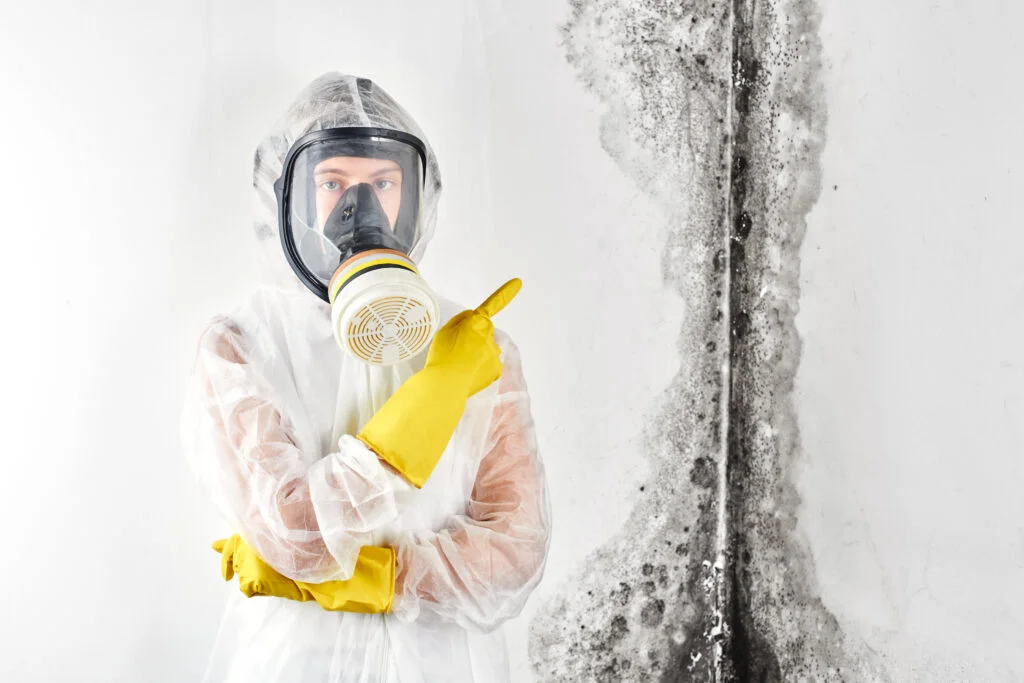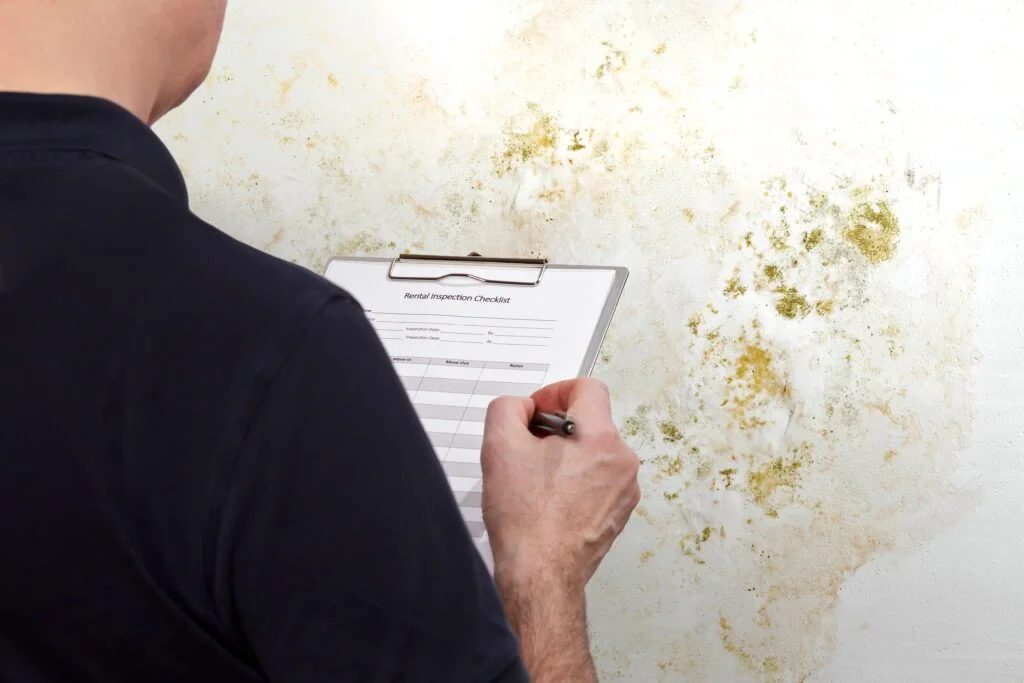Furniture and Clothes Mold
Inspection & Testing Services In Florida
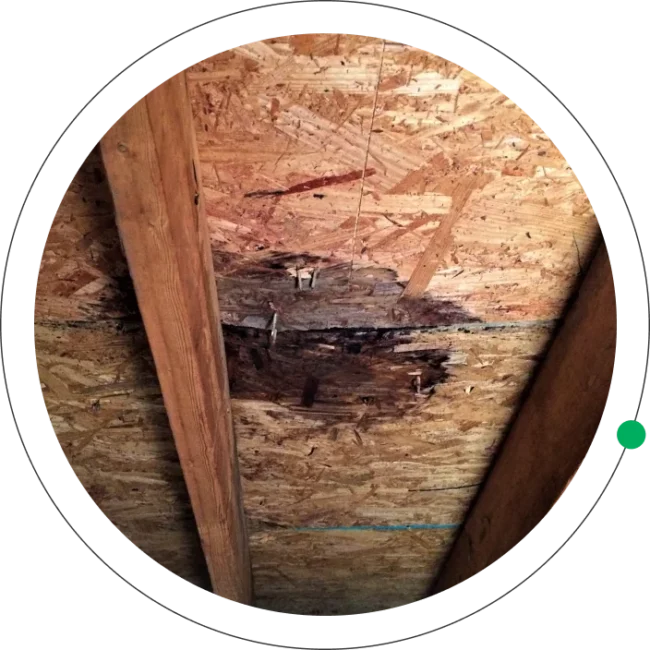
Why are furniture and clothes places prone to mold growth?
Florida’s climate is perfect for mold growth, especially on your furniture and clothes. The constant humidity, warm temperatures, and frequent rain make it easy for moisture to build up inside homes. This extra moisture creates a great environment for mold spores to settle and grow on materials like fabrics, wood, and leather.
Furniture and clothes are particularly at risk because they are made from organic materials that absorb moisture from the air, spills, or leaks. Poor ventilation and low airflow in storage areas can trap moisture, creating perfect conditions for mold.
Dark, damp spaces with dust and dirt give mold the moisture and nutrients it needs to spread. To prevent mold, keep humidity levels low, ensure good ventilation, and regularly clean and check your items for signs of moisture or mold.

Common signs that indicate the
furniture and clothes mold are

Musty Odor
If you notice a constant musty odor around your furniture or clothes, it could be mold. Mold often gives off a strong, unpleasant smell.

Visible Spots
Check for any discoloration, fuzzy patches, or stains on your furniture or clothing. Mold can appear as black, green, or white spots and can spread quickly if not treated.

Discoloration
Unusual stains or discoloration on fabric, wood, or upholstery.

Health Symptoms
If you’re experiencing unexplained allergies or respiratory issues like sneezing, coughing, or itchy eyes, mold could be to blame. Check your furniture and clothes if you’re feeling unwell.

Texture Changes
A fuzzy or slimy texture on the furniture surface.

Warping or Damage
Wooden or leather furniture might start to warp or show signs of damage if mold is present. This can weaken your furniture and compromise its structure.
Tips to Identify furniture and clothes Mold
- Check for a persistent, musty, or earthy odor around the furniture, which is often a strong indicator of mold presence.
- Inspect the furniture for black, green, white, or gray spots and patches, which are common appearances of mold.
- Examine the furniture's surface for unusual stains or discoloration, particularly on fabric, wood, or upholstery.
- Run your hand over the surface of the furniture to detect any fuzzy or slimy textures, which can indicate mold growth.
- Look under cushions, inside drawers, and in crevices where mold might be growing out of direct sight.
- Be aware of increased allergy symptoms such as sneezing, coughing, or skin irritation when near the furniture, as these can be caused by mold.
- Check for warped wood, peeling paint, or damage to fabric and upholstery, as these can result from mold-related moisture.
- Feel the furniture for any damp spots that persist despite a dry surrounding environment.
Regularly inspecting your furniture Mold and maintaining proper ventilation, insulation,
Regular maintenance, immediate attention to spills and leaks, and ensuring proper ventilation can help prevent mold growth in carpeted areas.
Want to avoid Furniture Mold?
ETA tips for preventing it
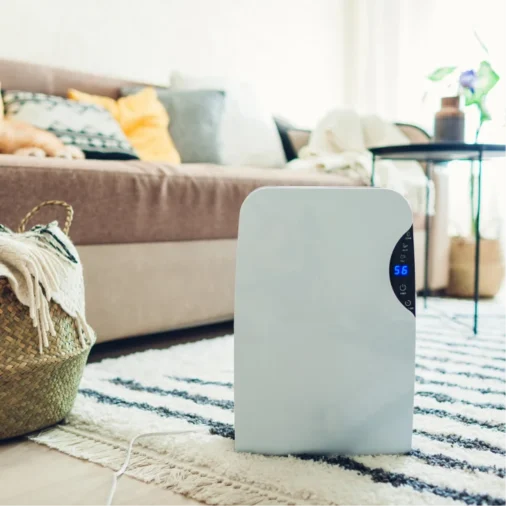
Control Humidity
- Mold loves moisture, so keeping humidity levels low is important. Try to keep humidity below 60%, and use a dehumidifier in areas like closets, basements, or laundry rooms where moisture tends to build up.
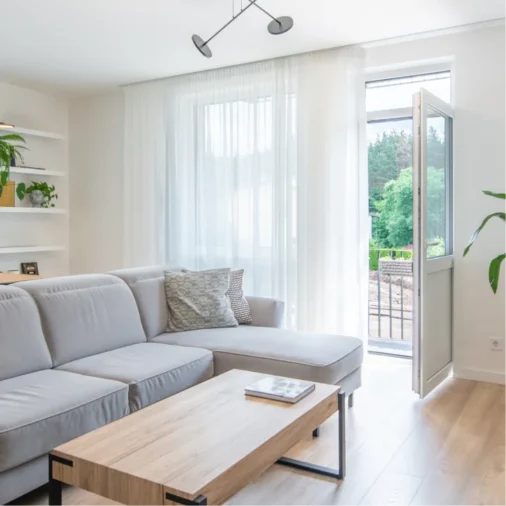
Ensure Proper Ventilation
- Proper ventilation is important, especially in storage areas like closets. Open windows when you can, use fans, or even install ventilation systems to improve airflow and keep moisture away.
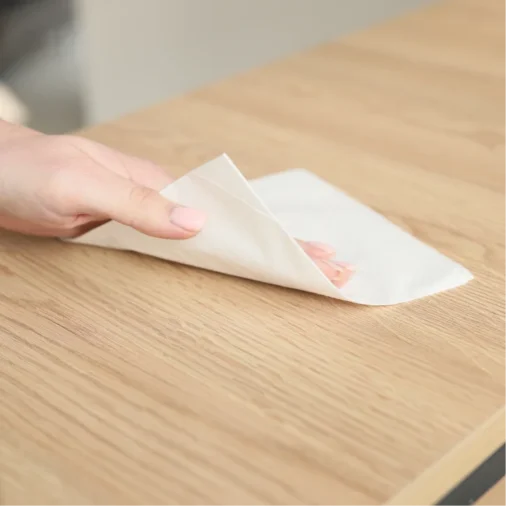
Clean Spills Immediately
- Promptly clean and thoroughly dry any spills or leaks on furniture to prevent moisture from seeping in.

Regular Cleaning
- Dust and dirt can hold moisture, so regular cleaning is important. Wipe down furniture and wash your clothes, especially if they’ve been in wet conditions.
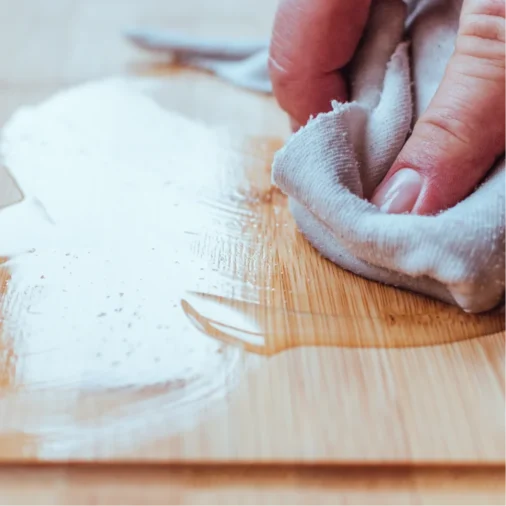
Use Mold-Resistant Products
- Opt for mold-resistant fabrics and materials when choosing or reupholstering furniture.
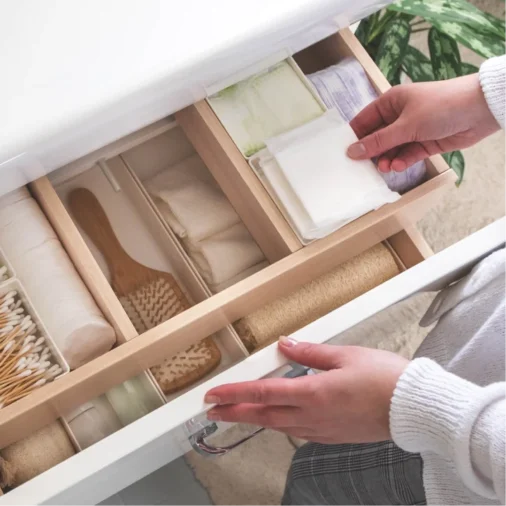
Keep Furniture Dry
- After cleaning or spills, make sure your furniture is completely dry. Wipe down wooden surfaces and dry fabric furniture to prevent moisture from sticking around.
Choose ETA for Expert Mold Testing
When it comes to checking for mold on your furniture and clothes, ETA Mold is the best option. Our team is skilled and careful, using the latest methods to find any hidden mold. We don’t just inspect; we offer personalized advice and tips to help prevent mold from coming back. Known for our fast and professional service, we deliver reliable results and long-lasting solutions. Choose ETA Mold for peace of mind and a mold-free home.
Professional Mold Inspection & Air
Quality Testing Services in South Florida.
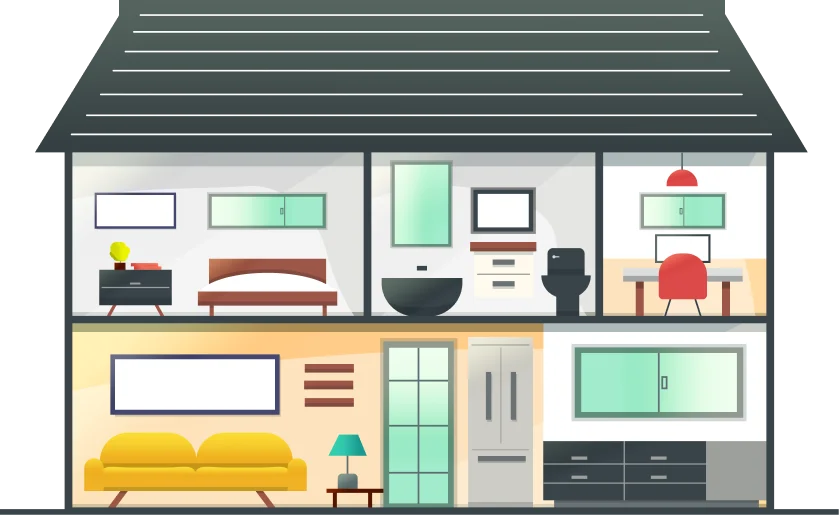
The Mold Inspection Process

DETECTION
We’ll discover the source of infrastructure damage. This is imperative and also the first step in our process.

TESTING
We send all samples to an accredited laboratory. Our labs know this is our priority and will give the most detailed results possible.

ASSESSMENT
Our certified and licensed assessors will compile a comprehensive report providing our documentation and lab analysis. All information comes with a scope of work.

Why Choose Environmental
Testing Agency?
Our team is comprised of industry-certified experts with extensive knowledge and experience in environmental testing. We utilize the latest technology and methodologies to ensure accurate and reliable results, making us leaders in the field.
Expertise
We are committed to providing exceptional customer service. Our team is responsive, thorough, and dedicated to assisting clients through every step of the testing process. We prioritize clear communication and tailored solutions to meet your specific needs.
Customer Service
Quality is at the core of everything we do. From rigorous testing procedures to detailed reporting, we ensure that all services meet the highest standards. Our commitment to quality helps clients make informed decisions based on dependable data.
Quality
Licensed, Certified,
and Insured Mold Inspection
and Air Quality Testing Company.

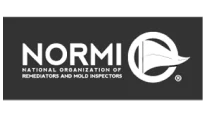



Before Booking an Air Quality Test
and Mold inspection Services
Receive $50 off!

Furniture & Clothes Mold FAQ’S
Furniture and clothes mold is the growth of mold on items like sofas, chairs, mattresses, clothing, and leather goods. Mold loves warm, damp places, so in humid climates like Florida, your furniture and clothes can be particularly at risk. When mold starts growing on fabric, wood, or leather, it can cause stains, musty smells, and even damage over time. But it’s not just about how things look; mold can also affect your health, causing allergies, breathing issues, and skin problems. That’s why it’s important to address mold issues quickly with professional inspection and testing.
First, take the fabric outside to prevent spreading mold spores indoors. Gently brush off any loose mold with a soft brush. Then, wash the fabric in hot water with detergent. If the mold is stubborn, try a mixture of water and vinegar or baking soda. Let the fabric dry completely in a well-ventilated area or in the sunlight, as moisture can encourage more mold growth.
Yes, mold on wood furniture can be dangerous. It can cause health problems, especially for those with allergies or breathing issues. Mold can also damage the wood, leading to structural problems over time. It’s important to tackle mold issues quickly to protect your health and your furniture.
Mold on wood often appears as dark spots or patches, which can be black, green, or white. It may look fuzzy or powdery, and the wood might feel soft or discolored. Sometimes, mold can cause the wood to warp or swell.
Mold on a couch usually looks like discolored spots or patches that can be black, green, or white. It might have a fuzzy or powdery texture and can spread if not cleaned properly. You might also notice a musty smell coming from the affected area.
Mold can grow on a couch due to high humidity, spills, or poor ventilation. If the couch is in a damp or dark area, it’s more likely to develop mold. Spills or stains that aren’t cleaned up properly can also create a mold-friendly environment.
Wooden furniture can become moldy due to excess moisture, high humidity, or water damage. Poor ventilation and damp conditions can create a perfect environment for mold. It’s important to fix any water issues and keep humidity low to prevent mold growth on your furniture.
Mold grows on furniture and clothes primarily due to excess moisture. High humidity, spills, leaks, or damp conditions can cause organic materials like wood, cotton, wool, and leather to absorb moisture, creating an ideal environment for mold.
Look for visible signs like discoloration, fuzzy patches, or stains on your items. Musty odors and changes in texture, such as rough or sticky surfaces, are also indicators. If you notice any of these signs or experience unexplained allergies, it may be time for an inspection.
It’s a good idea to have your furniture and clothes inspected if you experience water damage, persistent musty odors, or noticeable mold growth. Regular inspections can be beneficial if you live in a high-humidity area or have experienced previous mold issues.
Areas We Serve
In Florida
1. Miami Dade
- Coral Gables
- Coconut Grove
- Miami Beach
- Star, Palm & Hibiscus Island
- Key Biscayne
- Keystone Islands
- San Souci
- Miami Shores
- Pinecrest
- Brickel
- Bal Harbor
- Bay Harbor Islands
- Indian Creek
- Surfside
- Eastern Shores
- Sunny Isles
- Aventura
- Golden Isles
- Golden Beach
- The Roads
2. Broward
3.Palm Beach
- Royal Palm Beach
- Lake Worth
- Lantana
- Boca Raton
- Boynton Beach
- Manalapan
- Singer Island
- South Palm Beach
- North Palm Beach
- Tequesta
- Highland Beach
- Ocean Ridge
- Country Club Acres
1. Miami Dade
- Coral Gables
- Coconut Grove
- Miami Beach
- Star, Palm & Hibiscus Island
- Key Biscayne
- Keystone Islands
- San Souci
- Miami Shores
- Pinecrest
- Brickel
- Bal Harbor
- Bay Harbor Islands
- Indian Creek
- Surfside
- Eastern Shores
- Sunny Isles
- Aventura
- Golden Isles
- Golden Beach
- The Roads
2. Broward
- Bonaventure
- Hallandale
- Miramar
- Hillsboro Beach
- North Lauderdale
- Coconut Creek
- Hollywood
- Sea Ranch Lakes
- Oakland Park
- Sunrise
- Coral Springs
- Parkland
- Dania
- Lauderdale By The Sea
- Pembroke Park
- Tamarac
- Davie
- Pembroke Pines
- University Park
- Deerfield Beach
- Plantation
- Weston
- Fort Lauderdale
- Lighthouse Point
- Pompano Beach
- Wilton Manors
3. Palm Beach
- Royal Palm Beach
- Lake Worth
- Lantana
- Boca Raton
- Boynton Beach
- Manalapan
- Singer Island
- South Palm Beach
- North Palm Beach
- Tequesta
- Highland Beach
- Ocean Ridge
- Country Club Acres
- Jupiter
- Palm Beach
- Jupiter Inlet Colony
- Palm Beach Gardens
- Wellington
- Jupiter Island
- Palm Beach Shores
- Delray Beach
- Palm Springs
- Lake Clarke Shores
- Pelican Lake
- West Palm Beach


